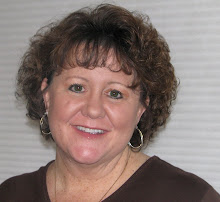
One reason people move to this area is the setting. Nestled among the mountains, Sandpoint sits on the shore of Lake Pend Oreille. But a growing concern for this community and others like it is the ability to maintain and preserve the quality of the water.
Molly McCahon is the coordinator for the Lakeshore Assessment System program, known as Lake-A-Syst, sponsored by Bonner Soil and Water Conservation District. She said the key is to educate property owners at the early stage of land development. She works with landowners on Priest Lake, Twin Lakes and Lake Pend Oreille, instructing them on ways to protect their water from chemicals and environmental pollutants.
“It is more effective to reach people before they make decisions on land development,” said McCahon, adding that it is more difficult to make changes once designs have been put in place. “It is important to let people know what would happen in the future if we don’t take care of our lake now.”
She cites erosion, algae blooms in swimming areas, and continual spending on the treatment of aquatic invasive weeds as examples.
This year Lake-A-Syst received three grants, including an $8,000 award from the Idaho Department of Environmental Quality. With educational materials already available to property owners on Lake Pend Oreille, this year’s grant money will be used to develop materials for the Priest Lake and Twin Lakes areas.
Linda O’Hare, district administrator for Bonner Soil and Water Conservation, describes the materials as a nine-chapter booklet that provides education and tools for assessing whether residents and businesses are doing their part to maintain good water quality.
“At the end of each chapter is a self-assessment test,” O’Hare said. “People can determine whether they are high risk or low risk when it comes to making good decisions on the water quality.”
Topics covered include lawn and garden management, household wastewater treatment, landscape and new construction, management of storm water runoff, and household hazardous waste and petroleum products management, as well as a brief discussion on Eurasian milfoil.
“The booklet is designed for shoreline landowners, but it is useful to everyone” said McCahon.
A key component of the education is to target landscapers and contractors upon whom landowners rely when making their landscaping decisions. McCahon attends garden shows, home improvement shows, and other related events and is currently developing a class to further educate these groups of professionals.
From what she observes along the shoreline, McCahon said there is much that can be done to improve the care of the shorelines.
Issues such as overfertilizing a lawn can become a problem because turf has a shallow root system; if the lawn extends all the way to the shoreline, the water can easily become contaminated. McCahon also said phosphorus contamination can develop into other issues.
“You do not want phosphorus in the water because it encourages the growth of aquatic weeds, such as Eurasian milfoil, and causes algae blooms. As we all know too well, Eurasian milfoil has become a huge problem in Lake Pend Oreille,” said McCahon.
With a degree in landscape architecture, McCahon helps landowners design vegetative buffers and implement their plan.
“The landowner supplies the plants, materials and labor,” said McCahon who provides fifteen hours of her time to a landowner at no charge.
She goes door to door distributing the materials and walks the property with the landowners, offering suggestions when needed.
“We are here because of our lake, and with the increase in development comes the increased risk of pollution,” said McCahon. “If we don’t take care of it, we may lose the quality of life we currently enjoy. I just want to see responsible development.”
For more information on the Lake-A-Syst program, go to www.plrcd.org/lakeasyst/ or call Molly McCahon at (208) 263-5310

No comments:
Post a Comment